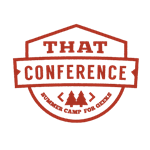
This!
Hosting this blog at GitHub Pages, and for free even!
Mike Ward’s session on Tuesday August 11, 2015 was GitHub Pages: Websites for you and your projects.
GitHub has a service that serves static pages from a GitHub repository.
Each GitHub account includes one GitHub pages site. Each GitHub repository can use GitHub pages also.
GitHub pages has a “built in” static website generator. The static website generator in GitHub pages is Jekyll. Jekyll is a Ruby language based static website generator that can be installed on Mac, Linux and Windows, but this is not necessary to use GitHub pages*.
Some reasons to use GitHub pages to serve a static site include:
- Free
- Fast
- Secure
- You can use your own domain name
- No more ftp – deployment is a simple git push
- Post are written in markdown
Getting started with GitHub pages is easy: clone an existing GitHub pages site and then edit, customize and make your own, then deploy. I did this for this site by cloning the GitHub repository for http://mike-ward.net . It is easy to add Google Analytics, Disqus comments.
One of the modifications that I made to my site was to enable taxonomies by adding categories and tags. Using The Jekyll documentation, and some Google searching I was able to figure out how to do this. It is kind of a cumbersome manual process at this point, but it works and I should probably write a post about how I did it. Another modification was adding a twitter feed.
It was this session that sparked my interest in exploring static website generators which is the subject of my talk at the Milwaukee Code Camp on October 24, 2015.
For more information:
Mike Ward’s session on Tuesday August 11, 2015 was GitHub Pages: Websites for you and your projects. Slides.
That Conference Summer Camp for Geeks
*If you have build errors when using GitHub Pages, Jekyll installed on your pc can be a big help with troubleshooting. Learned this from experince.

Leave a Comment